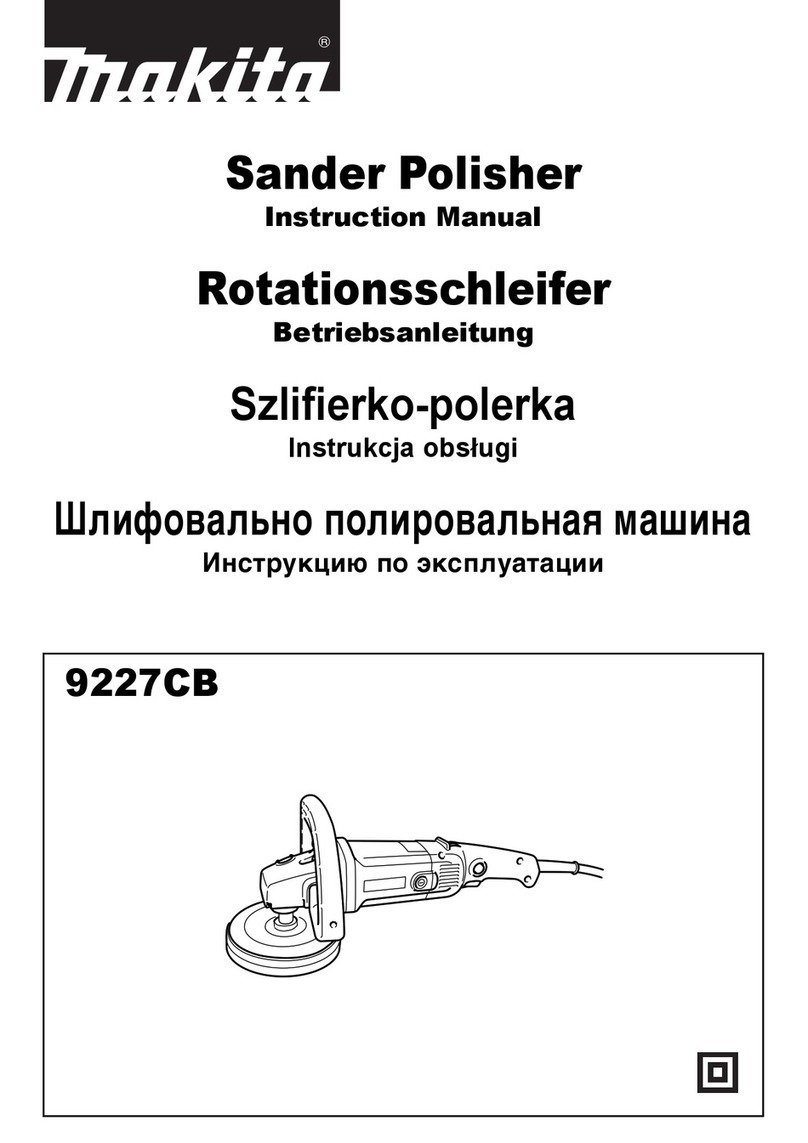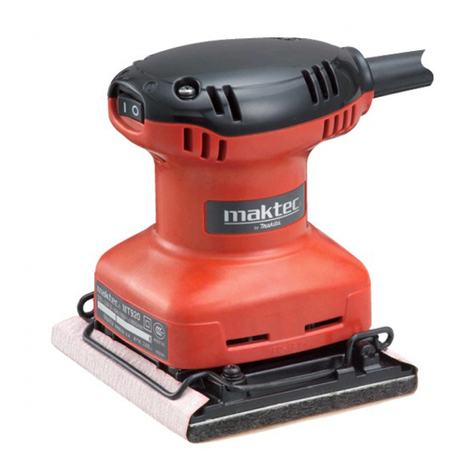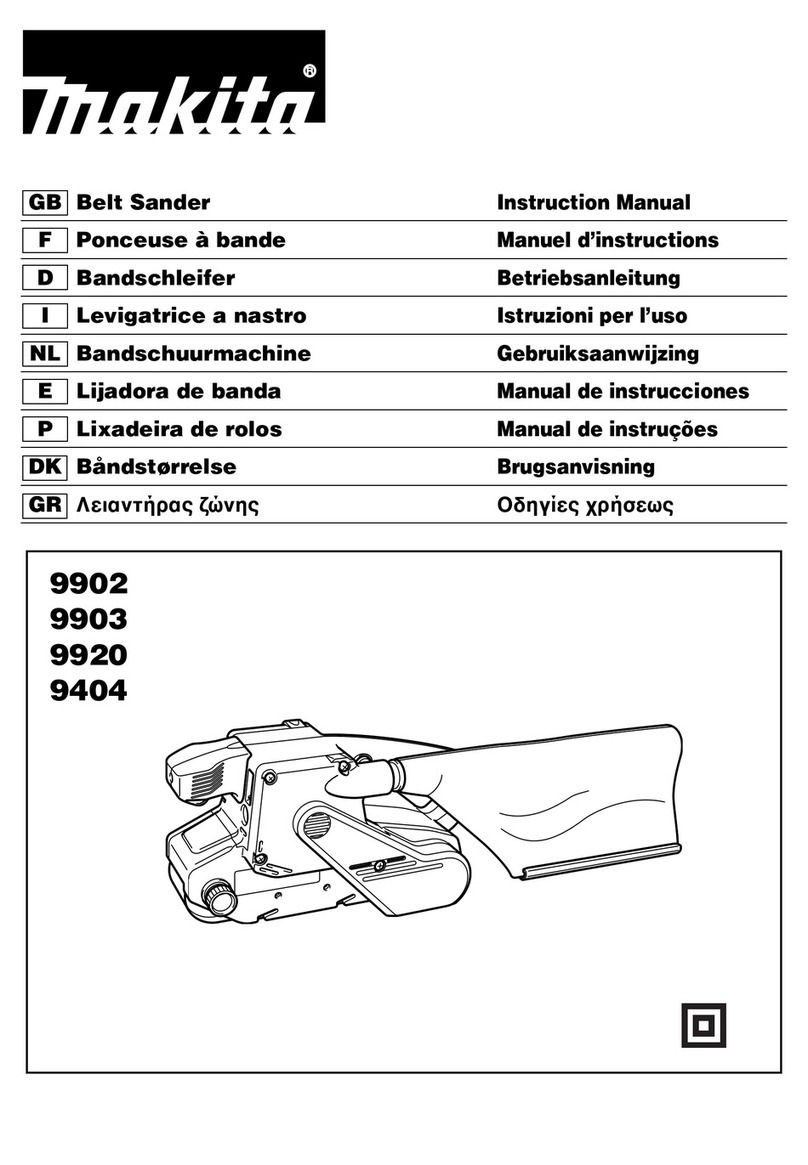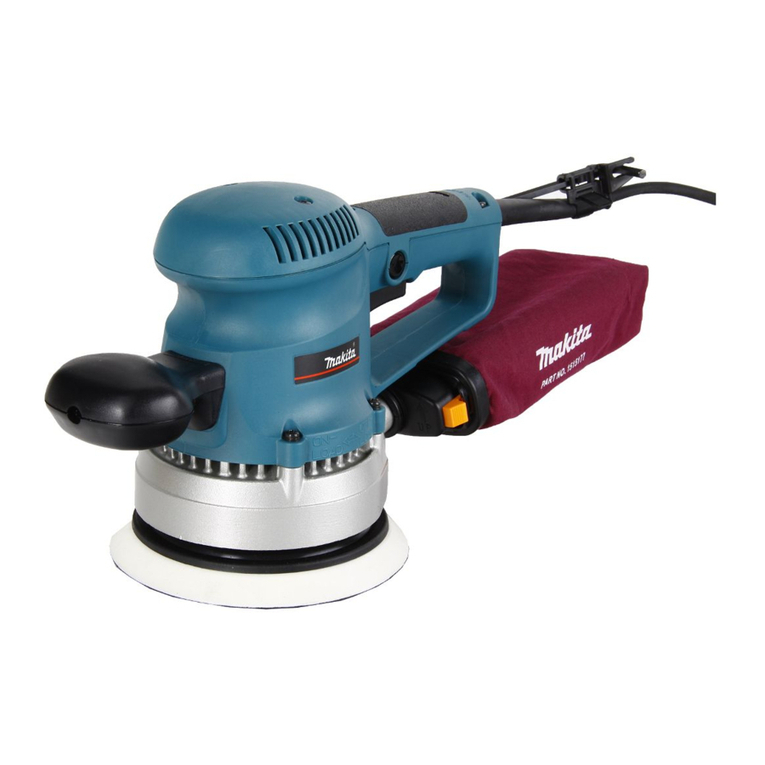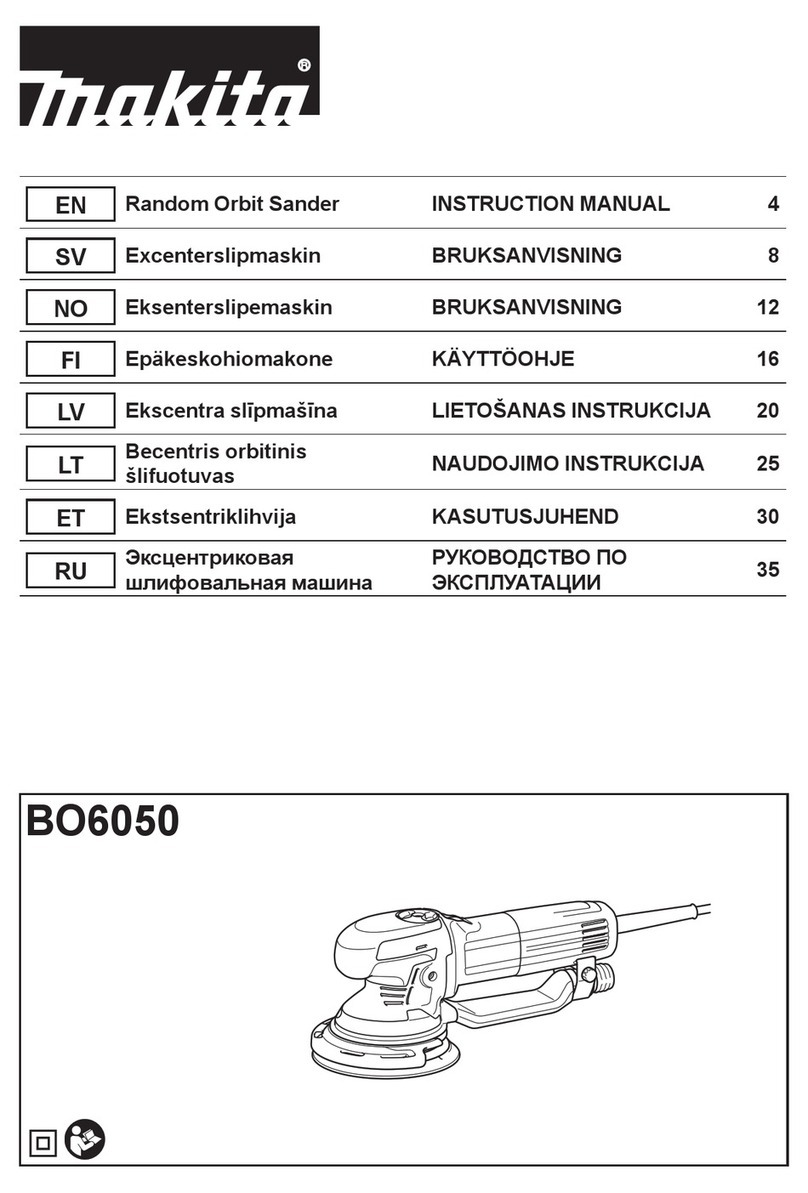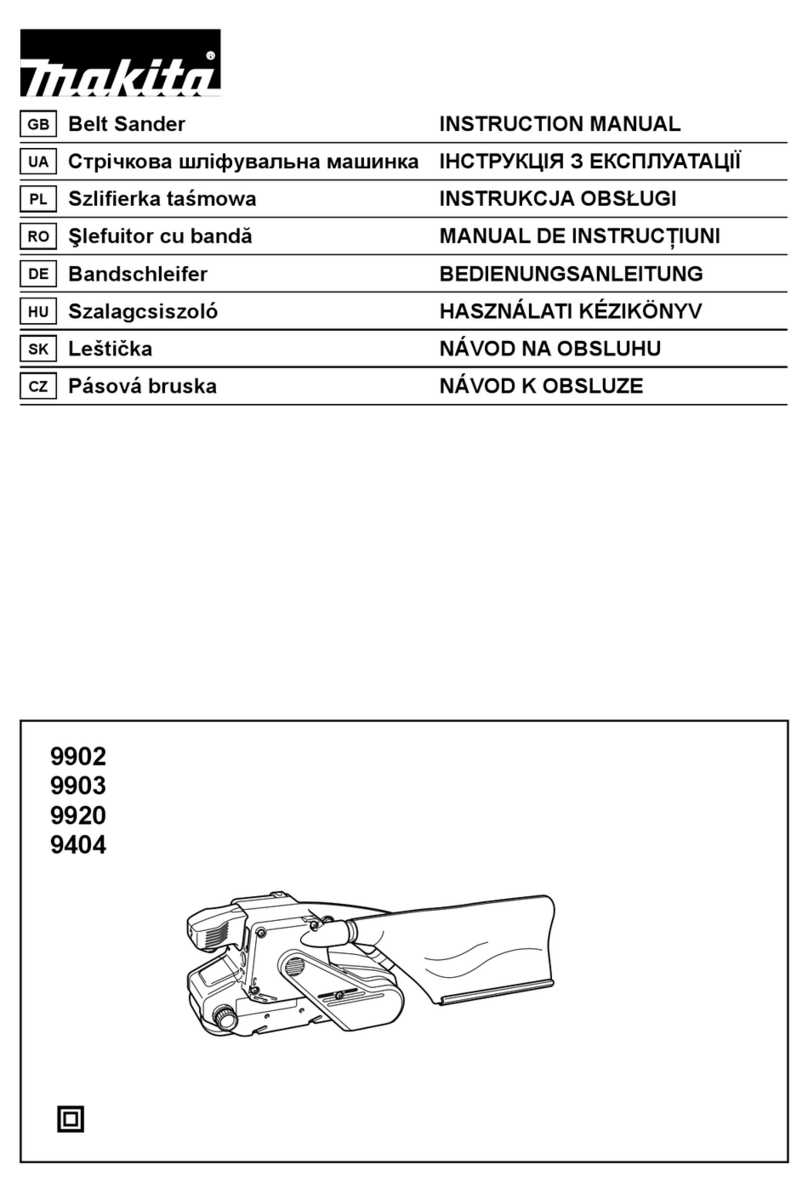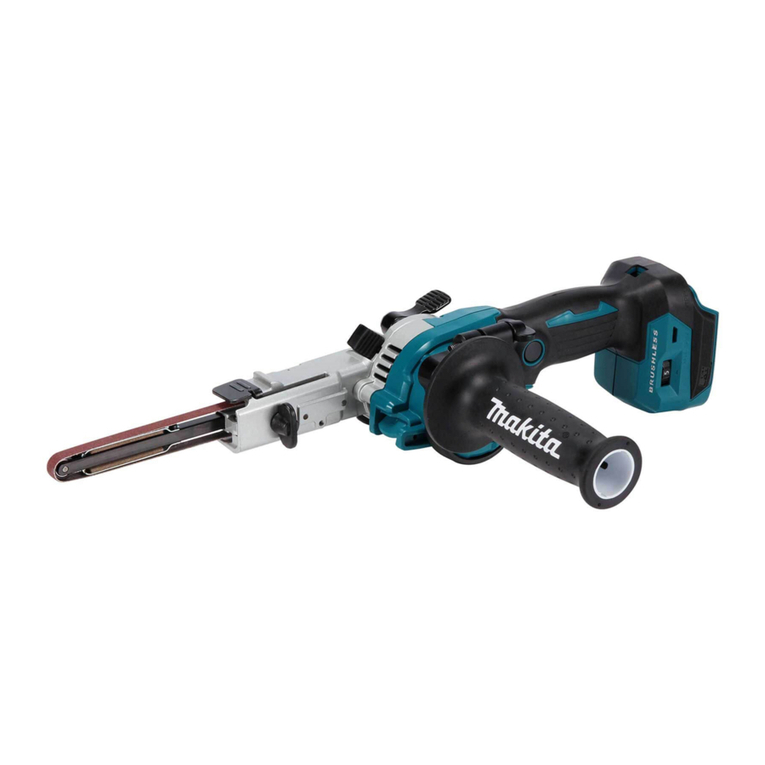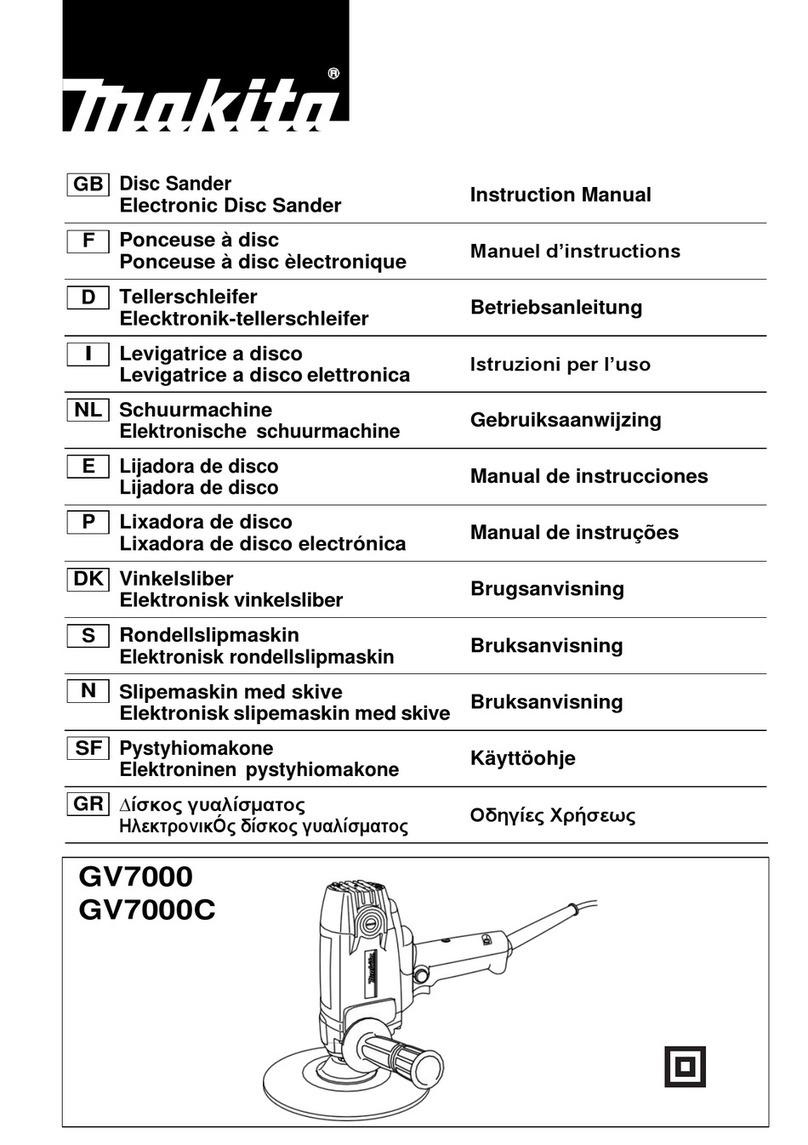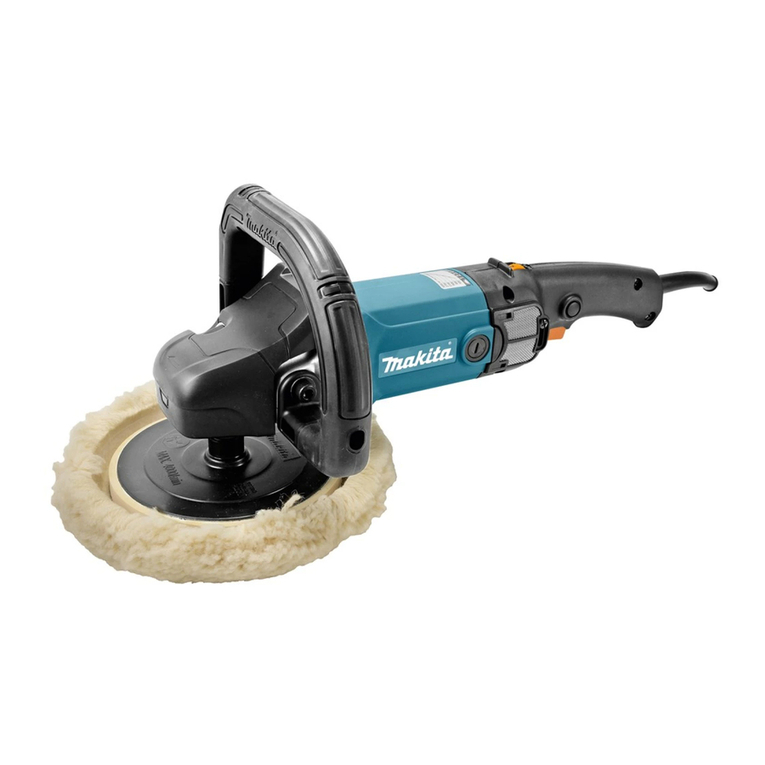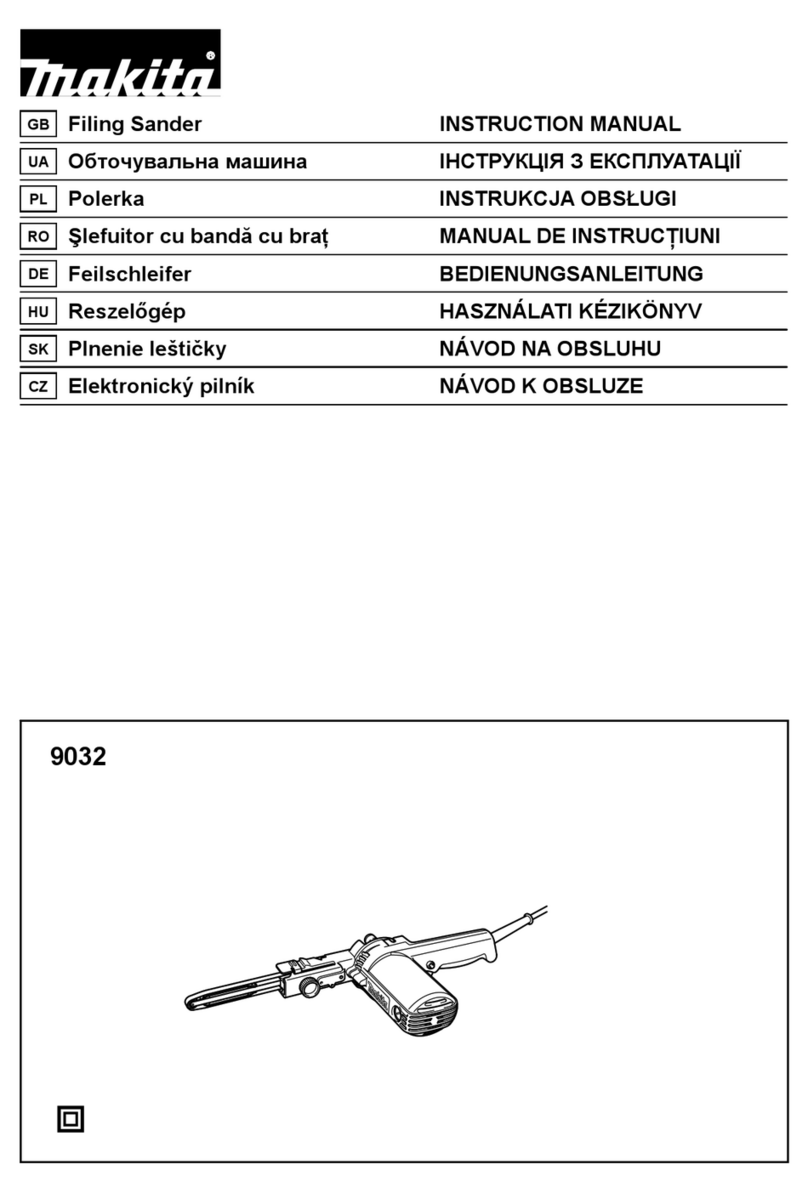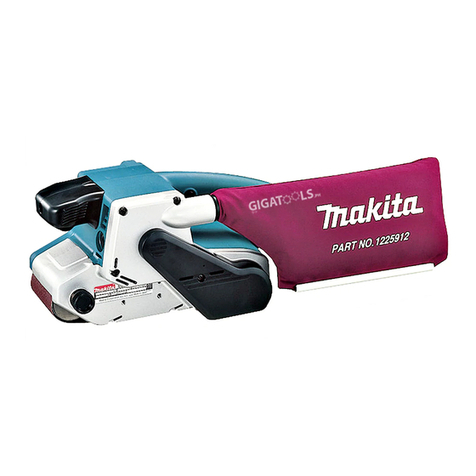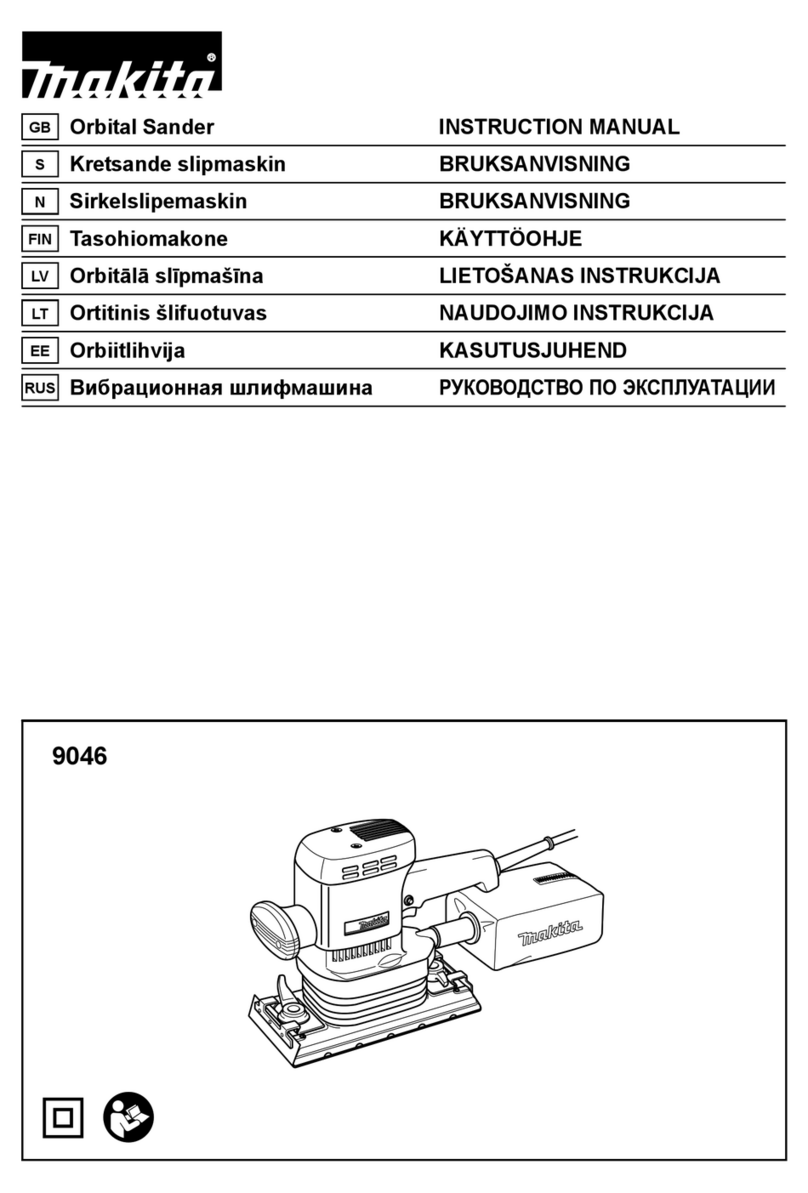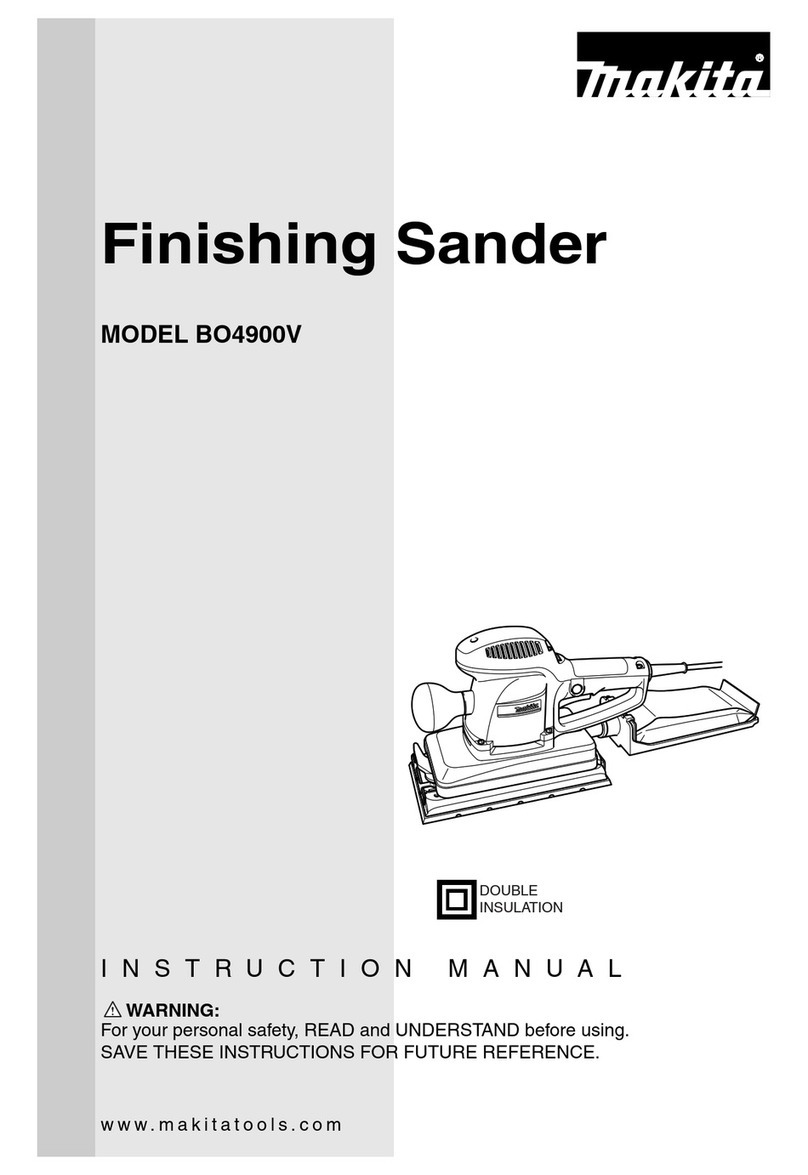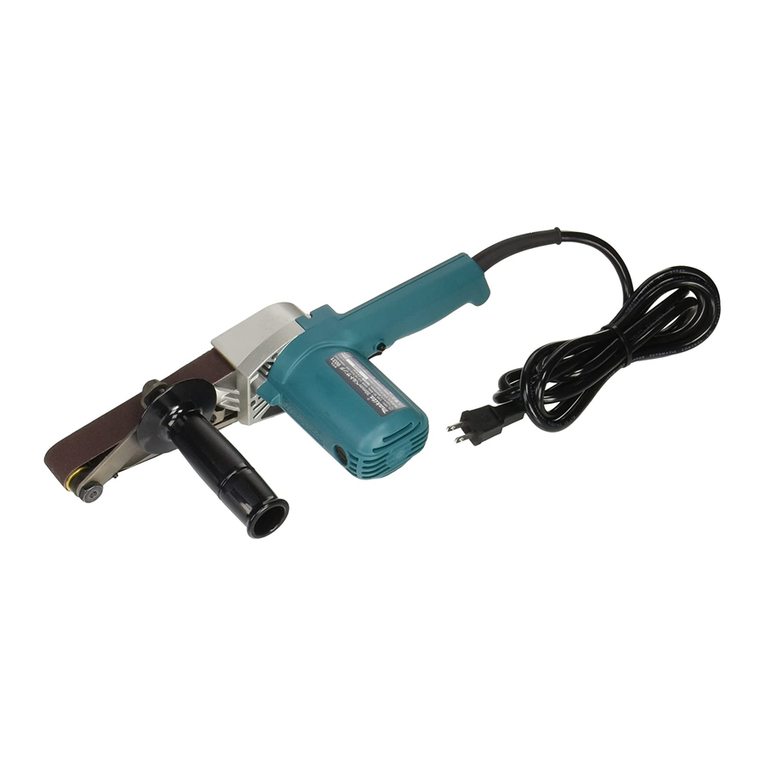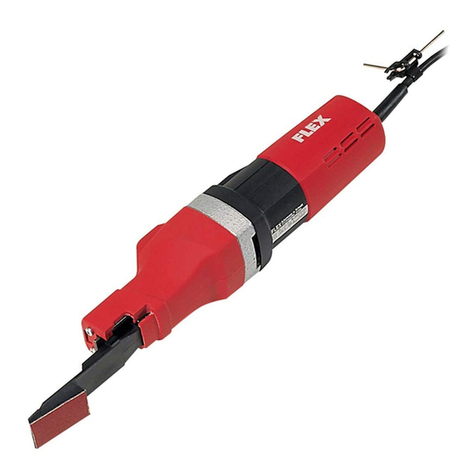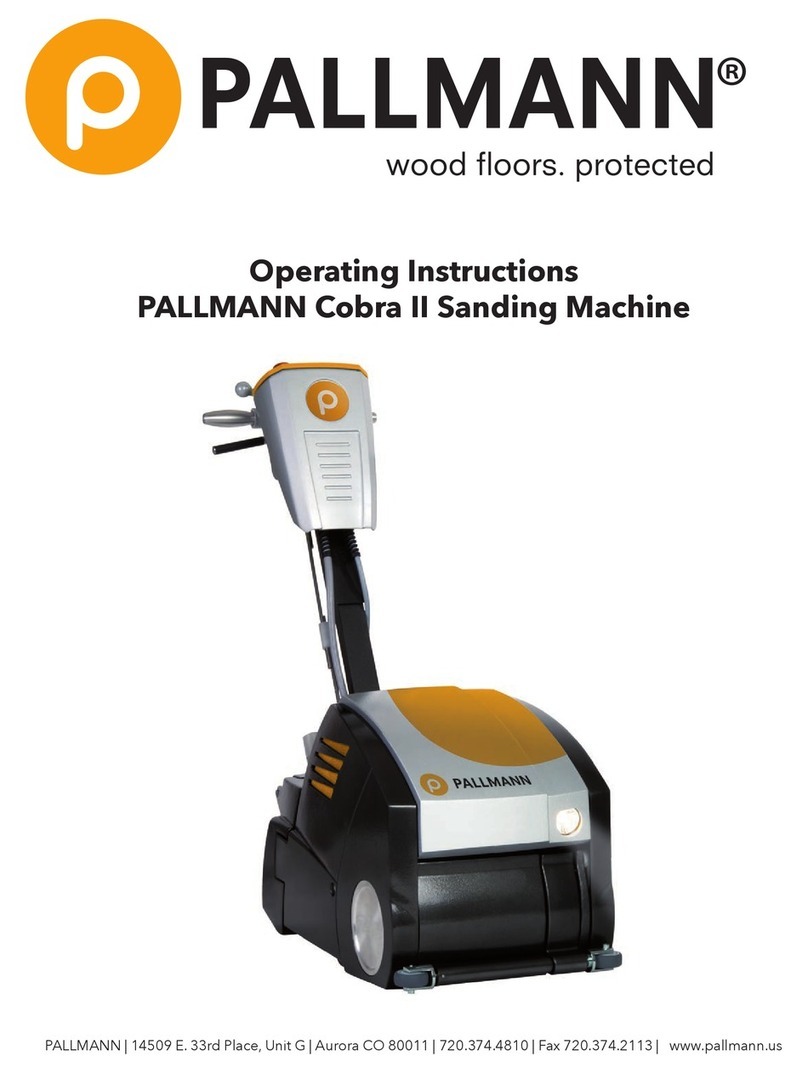
7
accessory and run the power tool at maximum no-
load speed for one minute. Damaged accessories
will normally break apart during this test time.
8. Wear personal protective equipment. Depending
on application, use face shield, safety goggles or
safety glasses. As appropriate, wear dust mask,
hearing protectors, gloves and workshop apron
capable of stopping small abrasive or workpiece
fragments. The eye protection must be capable of
stopping flying debris generated by various
operations. The dust mask or respirator must be
capable of filtrating particles generated by your
operation. Prolonged exposure to high intensity noise
may cause hearing loss.
9. Keep bystanders a safe distance away from work
area. Anyone entering the work area must wear
personal protective equipment. Fragments of
workpiece or of a broken accessory may fly away and
cause injury beyond immediate area of operation.
10. Hold the power tool by insulated gripping surfaces
only, when performing an operation where the
cutting accessory may contact hidden wiring or its
own cord. Cutting accessory contacting a “live” wire
may make exposed metal parts of the power tool “live”
and could give the operator an electric shock.
11. Position the cord clear of the spinning accessory.
If you lose control, the cord may be cut or snagged
and your hand or arm may be pulled into the spinning
accessory.
12. Never lay the power tool down until the accessory
has come to a complete stop. The spinning
accessory may grab the surface and pull the power
tool out of your control.
13. Do not run the power tool while carrying it at your
side. Accidental contact with the spinning accessory
could snag your clothing, pulling the accessory into
your body.
14. Regularly clean the power tool’s air vents. The
motor’s fan will draw the dust inside the housing and
excessive accumulation of powdered metal may
cause electrical hazards.
15. Do not operate the power tool near flammable
materials. Sparks could ignite these materials.
Kickback and Related Warnings
Kickback is a sudden reaction to a pinched or snagged
rotating wheel, backing pad, brush or any other
accessory. Pinching or snagging causes rapid stalling of
the rotating accessory which in turn causes the
uncontrolled power tool to be forced in the direction
opposite of the accessory’s rotation at the point of the
binding.
For example, if an abrasive wheel is snagged or pinched
by the workpiece, the edge of the wheel that is entering
into the pinch point can dig into the surface of the material
causing the wheel to climb out or kick out. The wheel may
either jump toward or away from the operator, depending
on direction of the wheel’s movement at the point of
pinching. Abrasive wheels may also break under these
conditions.
Kickback is the result of power tool misuse and/or
incorrect operating procedures or conditions and can be
avoided by taking proper precautions as given below.
a) Maintain a firm grip on the power tool and
position your body and arm to allow you to resist
kickback forces. Always use auxiliary handle, if
provided, for maximum control over kickback or
torque reaction during start-up. The operator can
control torque reactions or kickback forces, if proper
precautions are taken.
b) Never place your hand near the rotating
accessory. Accessory may kickback over your hand.
c) Do not position your body in the area where
power tool will move if kickback occurs. Kickback
will propel the tool in direction opposite to the wheel’s
movement at the point of snagging.
d) Use special care when working corners, sharp
edges etc. Avoid bouncing and snagging the
accessory. Corners, sharp edges or bouncing have
a tendency to snag the rotating accessory and cause
loss of control or kickback.
e) Do not attach a saw chain woodcarving blade
or toothed saw blade. Such blades create frequent
kickback and loss of control.
Safety Warnings Specific for Grinding Operation:
a) Use only wheel types that are recommended
for your power tool and the specific guard
designed for the selected wheel. Wheels for which
the power tool was not designed cannot be
adequately guarded and are unsafe.
Safety Warnings Specific for Sanding Operations:
a) Do not use excessively oversized abrasive
disc. Follow manufacturers recommendations,
when selecting abrasive disc. Larger abrasive disc
extending beyond the pad presents a laceration
hazard and may cause snagging, tearing of the disc
or kickback.
Additional Safety Warnings:
16. Always use a sanding disc or offset diamond
wheel specifically designed for wet operation.
17. Always install the dust cover before operation.
18. Ground Fault Circuit Interrupter (GFCI) protection
should be provided on the circuit(s) or outlet(s) to
be used for the tool. Receptacles are available
having built-in GFCI protection and may be used
for this measure of safety.
19. For additional protection against electric shock,
be sure to WEAR RUBBER GLOVES AND RUBBER
BOOTS during operation.
20. When using the water feed, be careful not to let
water get into the motor. If water runs into the
motor, an electric shock hazard may result.
21. PROPER GROUNDING. This tool should be
grounding while in use to protect the operator
from electric shock.
22. EXTENSION CORDS. Use only three-wire
extension cords which have three-prong
grounding-type plugs and three-pole receptacles
which accept the tool’s plug. Replace or repair
damaged or worn cord immediately.
23. Make sure the abrasive disc is not contacting the
workpiece before the switch is turned on.
24. Before using the tool on an actual workpiece, let it
run for a while. Watch for vibration or wobbling
that could indicate poor installation or a poorly
balanced wheel.
25. Do not leave the tool running. Operate the tool
only when hand-held.
